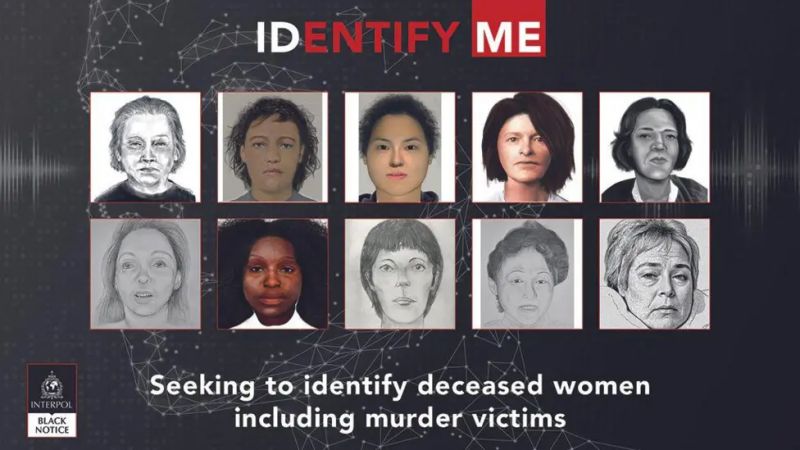Interpol, the International Criminal Police Organization, has turned to the power of the crowd to help solve 46 cold cases involving unidentified women. Sparking an unprecedented initiative, the global police cooperation agency is seeking the assistance of the public in hope of identifying these women and, consequently, work towards providing closure to their untold stories.
Interpol came to this decision after realizing that for these cases, police detectives, forensic analysts, and experts have exhausted traditional investigative techniques. The victims in these 46 cold cases remain unidentified, with many instances happening several years ago.
The concept of leveraging public help in cases isn’t new. What is novel about this initiative, however, is the sheer scale and its international span. Interpol is known for its global reach, being central to police force cooperation and crime intelligence in 194 member countries. Considering this broad perspective, the call for public help is a robust and strategy and likely to yield results.
The public, in many ways, can contribute valuable information that might otherwise be overlooked. The initiative also promotes public engagement in law enforcement endeavors, fostering closer ties between the community and the police.
Now, the plea from Interpol goes out to multiple digital platforms, including its official website and social media channels. The website houses photographs and information about the 46 cases, including known details of where they were found and their distinctive features. The aim is to jog any potential witnesses’ memories or prompt recognition from anyone who may have known these women.
One of the cornerstone cases involved is the story of a woman found in Austria in 1979. She was discovered in a forest, fully clothed but without any form of identification. Despite rigorous investigative efforts, she remains unidentified over 40 years later.
In another case, a woman was found wandering in a French town’s streets in 2004, seemingly suffering from amnesia. Yet, despite nearly two decades passing since the incident, her identity is still an unsolved mystery.
There’s no telling how many potential witnesses are yet to be reached with the information they hold. Unused clues and unexplored leads may lie dormant in the memories of these potential witnesses. This initiative hopes to find and breathe life into such memories, leading to substantial breakthroughs in these stagnant cases.
Public participation can prove instrumental in breaking open these cases as it revolves around the principle that someone, somewhere, knows something. Therefore, reaching out to the global public boosts the chances of uncovering significant leads that could aid in identifying these women.
Moreover, in taking this approach, Interpol not only stands to solve these cold cases but also shed new light on the ever-evolving field of criminal investigation. As authorities innovate their techniques and consider less traditional routes, such as public input, they are likely to tap into resources and solutions previously unexplored.
However, the role of technology and digital platforms should not be understated. Without these, it would be significantly more challenging to reach out to the global public. The ease of access allows potential witnesses to view the details of these cases and share the information conveniently online.
Ultimately, by appealing to the global public for help, Interpol hopes to find closure for these 46 long-standing cases. Hidden in this crowdsource approach lies the possibility of drawing light on the identities of these unidentified women, adding a significant piece to their untold stories, providing closure, and possibly leading to progress in the investigation of their cases.




